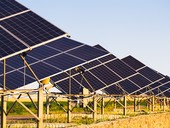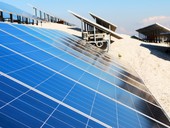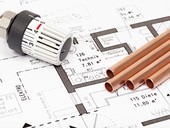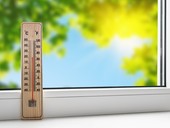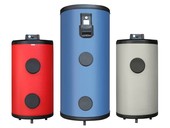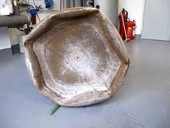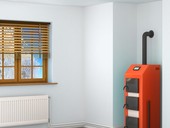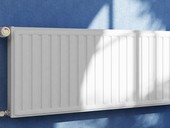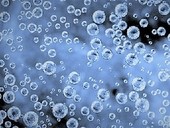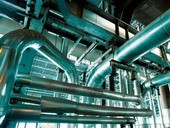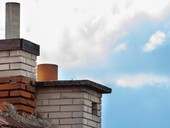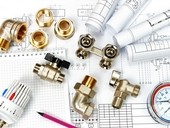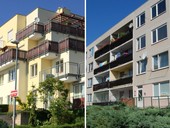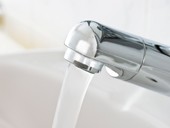This study investigates the impact of energy renovation on the indoor air quality of apartment building during heating season. The study was performed in one residential building before and after its renovation. Energy audit was performed and energy certificate was calculated for the renovated and the non renovated condition of the dwelling. Objective measurements of CO2 concentration have been used for the evaluation. The average concentrations was much higher after the refurbishment. The air exchange rate was calculated, which was higher in the unrenovated apartments. This study shows that energy renovation of the residential buildings in Slovakia may reduce the quality of the indoor environment in the apartments especially in winter season.
Maintaining a healthy indoor environment requires much more intense air exchange after the reconstruction of the house as it is achieved. Although this is related to energy consumption, it is otherwise endangered by the health of the user. Reducing the thermal energy consumption of the house to the detriment of the quality of the indoor environment and the health of the users of the dwellings can not therefore be considered as a saving and can not be calculated when assessing the energy savings of the building's heating system after reconstruction.
Archiv článků od 5.6.2017 do 9.10.2017
The authors compare the measured data on the production and use of electricity produced by the solar photovoltaic power plant with the total electricity consumption in the production area of the company. The second part of the article is based on considerations about the use of overproduction of electricity for heating and hot water preparation and its economy.
The authors compare the measured data on the production and use of electricity produced by the solar photovoltaic power plant with the total electricity consumption in the production area of the company. The second part of the article is based on considerations about the use of overproduction of electricity for heating and hot water preparation and its economy.
Investments in heating systems of apartment houses are large and still growing. New modern components of the heating system are coming to market, which are further increasing the investment. Systems become more complex and therefore more susceptible to malfunctions. One solution can be the single-pipe hot water system.
Although the heating water is in a non-life-saving environment, it contains a minimum of nutrients and has an elevated temperature, microorganisms can be propagated under certain conditions. Depending on their type and amount, problems with excessive occurrence of gases in the heating system, smell and corrosion may occur. The most frequent cause of the introduction of microorganisms into the heating system is the storage of pipes in the outdoor environment without their ends being blocked, and then, of course, the purity of the water that is impregnated into the system.
The paper deals with the experimental determination of heat losses of reservoirs (hot water storage tanks, heaters, heat reservoirs). It shows how the thermal loss of the tank itself, determined by the correct procedure in accordance with the standard, can be different from the loss of the reservoir connected to the thermal system.
This paper describes the method of determining the heat losses resulting from the heat transfer to the space according to ČSN EN 15316-2-1. Based on a detailed comparison of the different heating methods considered for rooms with a room height higher than 4 m, their heat-sharing efficiency is evaluated.
The article deals with the analysis of a possible solution of a non-energy residential building. The analysis shows what energy sources help to achieve a zero balance of non-renewable primary energy and what is not. In the contribution, the investment solution and the real operating costs of the energy-zero residential building compared to the current solution are shown for the selected solution and a simple payback period is set.
With the advent of the EU Commission Regulation 2015/1189 on the ecodesign of the solid fuel boilers, there are beginning to emerge questions and ambiguities regarding the conversion of the efficiency and emission values reported in the protocols from the testing laboratories. The EU Commission Regulation introduces new evaluation of boilers specifications, which are seasonal efficiency and seasonal emissions. The calculation of the seasonal efficiency takes into account also the electricity consumption and potential production of electricity in a cogeneration boiler. The article mentions the formulas for the conversion of the boilers specifications according to the requirements of the mentioned Regulation. It also includes a model example.
The article deals with influence of heat losses in distribution system and related cooling of heating water on the design of two-pipe counter-flow heating system. On the numerical reference model was studied the effect of distribution heat losses and cooling of the heating water on the heating system with mass flow rates designed by conventional calculation. In the following part were compared results from conventional design with design based on the numerical model which considered heat losses of the distribution system and cooling of the heating water. Mass flows rates were chosen as the compared variable, as they affect both thermal and pressure behavior of heating systems.
Revealing the cause of a faulty heating system in a residential building by over-aerating it can be far more complex than it appears at first glance. The impetus for the expert opinion was the complaint to the heating system operator that one riser of the heating system was repeatedly aerated and the heating element on the last floor was decommissioned.
The paper is focused on the issue of the pipeline networks dilatation. From the perspective of the designer, it is a very simple and well-documented issue. However, as is shown in the article, if the basic requirements are not met when designing the pipeline networks, the results can be quite fatal.
This article deals with verification of function of Laddomat 21 (which mixes supply heating water with return water), verification of the time needed to heat up the thermal storage tank when using Laddomat with different thermostatic cartridges (required temperature settings) and effect of using this system on the pollutants emission in the flue gas.
The definition of what is a common part of a residential building is essential especially when modifying the building structures and eliminating defects that affect both a common part and residential units. How common parts are defined affects who finances the modifications and reconstructions of such structures and parts. The definition of common parts is based on the new Civil Code (No. 89/2012 Coll.) and on the already abolished Act on Ownership of Housing (No. 72/1994 Coll.).
Since the combustion of solid fuels in heating boilers is attended by emissions of pollutants, in individual EU countries are gradually adopted different tightening requirements (emission and efficiency), which the appliance must meet. Requirements are targeted both the producers or importers of the combustion devices and theirs' operators. The aim of this article is to provide an overview of current and oncoming requirements and also show their comparison.
zpět na aktuální články

